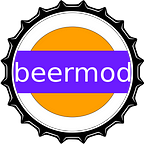The share of non-alcoholic beer in the industry has been growing at an unexpected rate in recent years. Will it be such a popular drink that people did not like it very much until recently? Is it different from the alcoholic beer we know? What are the reasons for the industry to grow so much? Let’s look at the answers to these questions in detail.
How Do We Define Non-Alcoholic and Low-Alcohol Beers?
The definition of non-alcoholic beer can differ from country to country. While the accepted threshold in the European Union and the USA is 0.5%, for example, a stricter limit has been drawn in the UK and determined as 0.05% ABV. However, if we take the general definition thresholds accepted in the world as a basis, a table appears as follows:
- Non-Alcoholic Beer: not more than 0.05% ABV
- Alcoholic Beer: not more than 0.5% ABV
- Low Alcohol Beer: not more than 1.2% ABV
What is the Calorie Difference with Regular Beer?
There are 7 calories in 1 gram of alcohol, with its chemical name, Ethanol. A regular beer contains 0 grams of sugar and traces of carbohydrates. So, most of the calories we actually take come from alcohol. To make a comparison:
For alcoholic beer, if we consider a beer with 5% alcohol content, a 330 cl beer contains approximately 153 kcal calories.
What about non-alcoholic beer? All other nutritional values are the same (0.0 / 0.05) and the calorie of non-alcoholic beer is about 69 kcal.
Let’s also look at low-alcohol beer, the calorie of a beer with 0.5% alcohol is about 37 kcal.
How to Produce Non-Alcoholic and Low-Alcohol Beers?
But what makes non-alcoholic and low-alcohol beers different? The answer lies in the brewing process. To produce these beers, almost the same “normal” brewing process is used. But at the end of the process, the alcohol is reduced through various methods, so in fact, even in the non-alcoholic beer, still a trace amount of alcohol (0.05%) remains. There are three different ways to produce these beers:
1-High Heat
After the fermentation process is over, the final product is exposed to high temperatures. The key point here is and Methanol, so the boiling temperature of alcohol is lower than water. In other words, the alcohol evaporates first from the heated must. With this method, producers can reduce the amount of alcohol they want to the extent they want. While this method is effective, it does come with a downside. As the alcohol evaporates, it also takes away the pleasant aromas in the beer. That’s why non-alcoholic beers do not offer as pleasant a drink as regular beer.
2-Vacuum Distillation
This method is considered to be the most efficient when carried out with limited fermentation and vacuuming. When the consumable sugar in must drops to 25%, it is quickly reduced from 18 degrees to 0 degrees and kept for 2 days. In this process, the yeast is purified from the must and the small amount of alcohol it contains is vacuumed. In this brewing method, other volatile flavor chemicals (such as alpha acids from hops) are less affected; hence the aroma remains closer to the original. Finally, we can say that this method is generally used for “low alcohol” beer production. Producers add around 10% normal beer to this beer in the last phase, ensuring that its aroma is similar to the beer we know.
3-Reverse Osmosis
With this method, beer is passed through a filter with small pores that only alcohol and water (and a few volatile acids) can pass through. Alcohol is distilled through a water-alcohol mixture. The water and remaining acids are added back to the syrupy mixture of sugars and flavor compounds left on the other side of the filter.
So, Can Soft Beer Really Rival Soft Drinks?
We see that almost all large companies enter the non-alcoholic beer industry. The market is growing so rapidly that it is predicted to reach a size of $ 25 billion in 2024. The biggest reason for this growth is shown by the fact that the beer companies have their eyes on the sugary/soft drink sector. Growth in the sector also brings along diversity.
Examples of Non-Alcoholic and Low-Alcohol Beers
Click non-alcoholic beers or low-alcohol beers
Originally published at https://beermod.com.
